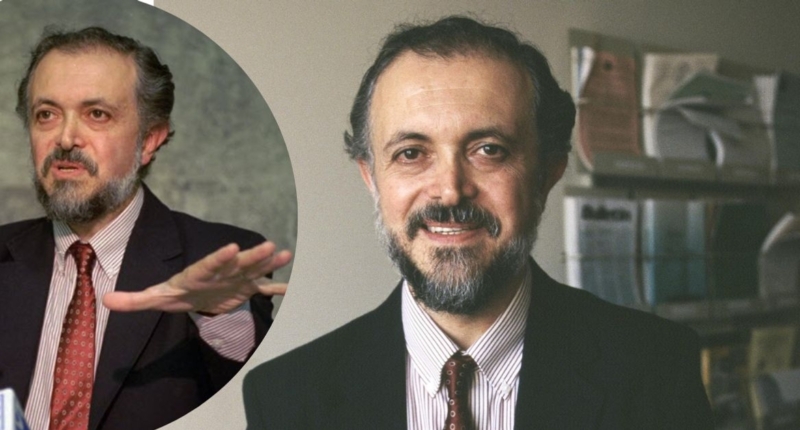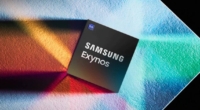Drs. Mario Molina and F. Sherwood Rowland discovered that CFCs were destroying the ozone layer in the stratosphere. This led to the adoption of the Montreal Protocol, which aimed to phase out the production of CFCs and other substances that deplete the ozone layer. Dr. Molina was a renowned environmental scientist who founded the Molina Center for Strategic Research in Energy and the Environment in Mexico City. He received numerous awards and honors for his scientific achievements and advocacy work, including the Nobel Prize in Chemistry in 1995 and the Presidential Medal of Freedom in 2013. Dr. Molina passed away in 2020 at the age of 77. His legacy lives on today, as countries around the world continue to work to reduce their emissions of ozone-depleting substances.
Remembering the Life and Legacy of Mario Molina, Nobel Prize Winner

Mexican-born American scientist Mario Molina passed away on October 7, 2020, at the age of 77. The Mario Molina Center for Strategic Research on Energy and the Environment confirmed that he died of a heart attack at his home in Mexico City. Molina was renowned for his work in revealing the dangers posed by chemicals used in hair sprays and refrigerators to the Earth’s ozone layer, which led to the adoption of the Montreal Protocol, an international treaty aimed at phasing out the production of such substances.
Molina’s research, conducted in collaboration with F. Sherwood Rowland of the University of California, Irvine, uncovered that chlorofluorocarbons (CFCs), a class of compounds widely used in commercial and household products, could erode the ozone layer in the stratosphere. They published their findings in the early 1970s, but it wasn’t until the mid-1980s that their work gained widespread attention.
Through legislative testimony and interviews, Molina and Rowland pushed for a global ban on CFCs, which sparked intense debate and resistance from the business community. However, their efforts ultimately led to the adoption of the Montreal Protocol in 1987, which has been hailed as one of the most successful international environmental agreements ever made. The treaty resulted in a significant reduction of CFCs and other substances that deplete the ozone layer, which has helped to mitigate the impacts of climate change.
Molina’s legacy is well recognized in the scientific community and beyond. In 1995, he was awarded the Nobel Prize in Chemistry, together with Rowland and Paul J. Crutzen of Germany’s Max Planck Institute, “for their work in atmospheric chemistry, particularly concerning the formation and decomposition of ozone.” Molina’s contribution to environmental awareness and policy-making has been described as “life-changing” by former US Vice President Al Gore, who referred to him as a “trailblazing pioneer of the climate movement.”
Molina’s research helped to save the planet from a potentially catastrophic environmental problem. His legacy lives on in the form of the Montreal Protocol, which serves as a reminder of the power of science in shaping policies that can benefit the planet and its inhabitants.
The Life and Legacy of Mario Molina: Scientist, Environmentalist, and Advocate
José Mario Molina-Pasquel y Henriquez, the Mexican-born American scientist, was born in Mexico City, Mexico, on March 19, 1943. His parents were Roberto Molina Pasquel, a lawyer and judge who served as the Mexican ambassador to Ethiopia, the Philippines, and Australia, and Leonor Henriquez Molina, who stayed at home to raise him. He had an early interest in science and chemistry, which he pursued with the help of his aunt, chemist Esther Molina. He attended a boarding school in Switzerland to learn German, which he believed was important for his future as a chemist. Molina earned his Ph.D. in physical chemistry from the University of California, Berkeley, in 1972.
Molina’s scientific work focused on atmospheric chemistry, particularly the impact of chlorofluorocarbons (CFCs) on the ozone layer in the stratosphere. Together with F. Sherwood Rowland of the University of California, Irvine, he discovered that CFCs could erode the ozone layer, which led to the adoption of the Montreal Protocol, an international treaty aimed at phasing out the production of such substances. Their findings had significant implications for climate change, as CFCs and other substances that deplete the ozone layer are also potent warming gases.
Molina was not only a respected scientist but also an environmentalist and advocate. He testified before Congress in 2010, where he emphasized the urgency of addressing climate change, saying that the overall image is clear and that it is a serious threat that needs to be addressed urgently. He was also politically engaged and concerned about the impact of science on society. According to his son, Felipe José Molina, Molina was driven to do work that had a benefit to society rather than just pure research or things that could potentially be harmful.
Molina’s scientific contributions were widely recognized, and he received numerous awards and honors, including the Nobel Prize in Chemistry in 1995, which he shared with Rowland and Paul J. Crutzen of Germany’s Max Planck Institute. The Royal Swedish Academy of Sciences recognized their work in atmospheric chemistry, particularly concerning the formation and decomposition of ozone, and stated that they had contributed to our salvation from a global environmental problem that could have catastrophic consequences.
Molina passed away on October 7, 2020, at the age of 77, at his home in Mexico City due to a heart attack. His legacy lives on through his scientific research, advocacy, and environmentalism. He was a trailblazing pioneer of the climate movement, whose work changed the course of history. On March 19, 2023, Google Doodle celebrated Molina’s 80th birthday, recognizing his contributions to science and the environment.
The Life and Legacy of Mario Molina: A Trailblazer in Environmental Science
Drs. Mario Molina and F. Sherwood Rowland discovered in 1974 that chlorofluorocarbons (CFCs), widely used in hair sprays and refrigerators, were eroding the ozone layer in the stratosphere. The two scientists published their research in the journal Nature, sounding the alarm about the damage caused by CFCs. This groundbreaking discovery led to the adoption of the Montreal Protocol, an international treaty aimed at phasing out the production of CFCs and other substances that deplete the ozone layer.
Dr. Molina had a distinguished career in environmental science, including positions at the Massachusetts Institute of Technology, the University of California, San Diego, and the Jet Propulsion Laboratory in Pasadena, California. He was also a passionate advocate for reducing air pollution in Mexico City, where he founded the Molina Center for Strategic Research in Energy and the Environment.
In recognition of his scientific achievements and advocacy work, Dr. Molina received numerous awards and honors, including the Nobel Prize in Chemistry in 1995, which he shared with Dr. Rowland and Paul J. Crutzen of Germany’s Max Planck Institute. In 2013, he was awarded the Presidential Medal of Freedom by President Barack Obama.
Dr. Molina passed away on October 7, 2020, at the age of 77. He is survived by his wife, Guadalupe Alvarez, a medical doctor, and their son, as well as his three stepsons, four of his six siblings, and two grandchildren. In his New York Times obituary, Dr. Molina was remembered as a visionary scientist and activist who never backed down from political pressure and always spoke truth to power.
The legacy of Dr. Molina and Dr. Rowland’s work on CFCs lives on today, as countries around the world continue to work to reduce their emissions of ozone-depleting substances. Their discovery is an important reminder of the power of science to identify and solve global problems, and Dr. Molina’s life and career are an inspiration to all those who seek to make the world a better place.
Don’t miss interesting posts on Famousbio










